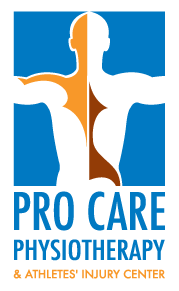
Acupuncture is an ancient Chinese health practice that alleviates pain and treats various health conditions and diseases. The method involves the insertion of needles used to naturally stimulate anatomic sites and restore the flows along specific pathways throughout the body.
While acupuncture is becoming increasingly more widespread, there are still several misconceptions surrounding this treatment:
Acupuncture is a natural pain killer: True
Acupuncture needles stimulate key points in the body to produce natural painkillers called endorphins. This can help reduce inflammation, improve sleep and digestive function, and fight serious illnesses.
There is no real science behind acupuncture: False
Although acupuncture has been around for thousands of years, it has not been categorized as folk medicine in the past. For many decades now, acupuncture has been a treatment option recommended by legitimate medical institutions. In fact, the NIH and the World Health Organization (WHO) recognize acupuncture as a valid treatment for a wide range of conditions.
Acupuncture is relaxing: True
The needles may seem a little intimidating at first, but in reality, the feeling during and after treatments is actually quite relaxing. The punctures may sting slightly, but they don’t hurt. The needles are very fine, and any initial discomfort fades fairly quickly.
It only takes one or two treatments to heal: False
While it is possible to feel instant relief after the first treatment, the amount of treatments differs from patient to patient depending on the condition. For acute problems, sometimes eight to ten visits in total is enough. However, for more complex or chronic conditions, one to two treatments per week for several months will most likely be recommended by your specialist.
If you are suffering from the following conditions, acupuncture may be the right treatment for you:
- chronic pain
- back/neck pain
- upper/lower extremity pain
- osteoarthritis
- migraines/headaches
- neuralgia/sciatica
- temporomandibular pain
For more information about acupuncture, physiotherapy, massage therapy, or to book a session with us, contact Pro Care Physiotherapy today.
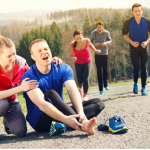
The most common sprain occurs at the ankle, particularly when the foot leans inward. This is the most common sports injury that ranks first in the orthopedic charts and alone, would be the consultation of 3 to 5% of emergency room visits. Sprains can heal very badly and then can cause chronic problems that can affect your daily activities and sports regime.
Sprained ligaments
The main function of ligaments are to connect the bones together. There are hundreds in the human body. Their role is crucial in many ways, including the pelvis during childbirth, for the protection of vertebrae in the spinal cord as well as for joint stability such as the knees, feet and ankles. A sprain involves the stretching of one or more ligaments whose impacts vary from a simple sprain to a complete tear that requires medical intervention and extended rehabilitation period.
Instability
Have you ever had recurrent ankle sprains as a result of uneven or slippery, or for no reason? The cause may be the lack of stability of the ankle. This is often secondary to a poorly healed sprain and is mainly characterized by inadequate control of movements of the ankle and foot whether from jumping or walking.
Tests to check the health of your ankle yourself
A lack of stability of the ankle is not something that you need to suffer with for the rest of your life. It may in particular be caused by a decrease in mobility, strength or balance. Here are some ways to test, in general, some essential elements for the stability of the ankle yourself. The following tests should be made in the absence of pain and in a safe environment; their main aim is to give you a general idea of the health of your ankle. This is, of course, no comprehensive evaluation. Note that several problems, other than a badly sprained ankle healed, can cause difficulties in one of these tests.
Express Test 1: Does your ankle lack mobility?
Lie on your back on the ground, legs stretched, and back of the foot in contact with the ground. Press your ankles on the floor by pointing the toes. Compare the two sides in terms of flexibility and space which lies between the floor and ankle. Mobility should be relatively similar from one side to the other.
Express Test 2: Is your ankle weak?
Stand on a stair step so that your heels are off the edge. The weight of your body should be on the front foot. From this position, lift your heels as high as possible and keep the position three seconds. Repeat three times. If possible, the same movement, but a foot at a time, and compare the two sides. The force should be relatively similar between the left and right side.
Express Test 3: Your balance is adequate?
Stand balanced on one foot as you swing the other leg from front to rear. Do it also with your eyes closed and compare the reactions between the two sides. If you are an athletic person and that this test does not show a steady decline, repeat it in the context of muscle fatigue or after practicing your sport.
Express Test 4: Are your ligaments chronically injured?
There is no test you can do yourself to check the integrity of your ligaments, essential to good stability of the ankle. Physiotherapists are trained to do so. They also assess comprehensively several components of the movement such as mobility, strength and balance. They will also assess your abilities in activities of daily life required in your work and in the practice of a sport.

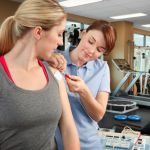
Throughout the world, people begin to experience the benefits of physiotherapy in their everyday lives. However, there are so far a few myths that discourage people to visit a physiotherapist.
Here are the three most common myths about physiotherapy:
- The therapy is painful
Physiotherapists tend to decrease the pain of their patients whether it is an acute or chronic pain. They determine the level of pain that you can’t tolerate and try not to exceed that level while helping you achieve a greater range of motion and activity. People who consult a physiotherapist often confess that the work of the result is much more significant than the process itself.
- The therapy is only for sick people
Apart from simply stretching and strengthening the weak muscles of the patient, physical therapists are skilled in many other aspects of physical well-being. They can assess and diagnose problems before they become serious handicaps such as: Carpal tunnel syndrome, frozen shoulder, chronic headaches and back pain also more properly called LBP.
- Any person can practice physiotherapy
In Ottawa, many people think that physiotherapy can be administered by any health professional. Some hospital administrators even think that one can become an assistant physiotherapist through practice without having to attend classes. This is fraud and can even cause damage in patients. The person may be prosecuted if treatment goes wrong. Some therapists have received specializations in areas like orthopedics, neurology, sports, health, women etc. There are a lot of specialists around you, you simply need to find the right ones that could take care of you.
Most people don’t even know what physiotherapy can do for you, but if you are dealing with a lot of pain, simply contact us and we’ll help you find the right solution to best relieve those pains.

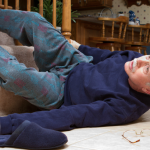
The risk of falling among seniors is a real source of concern, and rightly so, about 33% of people aged 65 and over living at home have already fallen. Falls are unfortunately a trigger leading to an early placement accommodation. Yet many available means of prevention exist and can significantly reduce the risk of falls. Here are some prevention tips you should follow:
The main causes of falls
There are three main categories of factors when it comes to falling:
- Factors related to the individual (loss of muscle strength in the lower limbs, taking more than three medications, loss of vision, blood pressure, etc.)
- Environment-related factors (dangerous stairs, cabinets above the stove, non-fixed carpet, etc.)
- The behavioral factors (recklessness, impulsivity, etc.)
In general, factors related to the individual and the environment are easier to control and improve. Concerning fall prevention, physiotherapists work more on the balance and on strengthening the lower limbs of each individual.
In terms of behavioral factors, teamwork is essential to target situations that make those at risk of falling and make them aware of their limits.
The consequences of a fall
The fall of a person can cause a range of direct and indirect consequences. These main consequences are listed here:
- Traumatology
- Fracture
- Dislocation
- Sprain
- Wound
|
|
- Psychic
- Anxiety
- Insecurity
- Demotivation
- Loss of self-esteem
|
|
|
|
Of all the possible types of consequences, fear of falling is probably the most damaging. Indeed, the fear caused by the first fall often leads to a significant decrease in physical and social activities. This reduction in activities usually generates a deteriorating physical condition and psychological health can lead to other health problems.
Facts
Among those 65 and older, 10 to 15% of falls are considered serious. Every year in Ontario, these falls represent about 16,000 hospitalizations. Among all of injurious falls, 70% occur at home.
The means of prevention
Several methods have been proven to prevent the risk of a first fall or to minimize the chance of recurrence after the first incident.
- Strengthening legs: Through exercises suggested by a physiotherapist, the elderly strengthens the lower body, which helps prevent injuries in case of falling.
- Development of balance: A physiotherapist will also prescribe exercises & work with the elderly to improve his balance.
- Evaluation of potential sources of falling at home: By making some adjustments, it is possible to greatly decrease the risk of falls (up 20%), especially among people with vision problems.
- Cataract surgery (the first eye): This surgery, if needed, causes a reduction of falls of around 37%.
- Health check-up: A comprehensive check-up by a healthcare professional can also help reduce the risk of falls by 27%.
Each year, many older people are injured by falling. Physiotherapy stakeholders play an essential role by providing targeted interventions and providing relevant information to our seniors and their families. These interventions help maintain the independence of older people and extend their life at home. For its part, the family has a motivational role in rehabilitation.

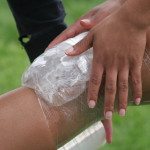
The use of ice to treat injuries is as old as we can remember. Perhaps, you have already used it? Here are six truths about ice that will help you better use it.
- It reduces pain
An application of about 20 minutes to an injured ankle reduces nerve conduction velocity of about 33% and increases our tolerance for pain. Advantage of using cold could be useful in the context of injury, such as after a surgery to the shoulder or abdomen and after a difficult birth delivery. Scientific evidence of cold analgesic have been established for several types of health problem. However, nothing is perfect. For example, some authors question the cumulative effects in the medium and long term, of repeated use of ice. According to them, the relief would be temporary.
- Its effects are relatively shallow
Applying ice to your calf for a period of 20 minutes reduces the skin temperature of 14 to 17 degrees Celsius. The internal temperature of muscle would however only decrease about 4 to 6 degrees. This is a significant difference that calls into question the benefits of Ice for deeper tissues such as the lower back or those located under a relatively thick adipose tissue.
- We must take precautions
Do not put ice on damaged skin (eg. wound), if its sensitivity is impaired as it is the case if you are suffering from a circulatory or systemic disease such as poorly controlled diabetes. Also, remember that the analgesic effect also cuts you from your biological alarm system that is pain.
- Special attention is required if you use it before you play a sport
The application of more than twenty minutes of ice decreases the speed and power, while an application of only ten minutes would have much less effect on some of these parameters. It is recommended to test first the reaction from your body before using it in the context of a sports performance.
- There is no evidence that it reduces inflammation
Inflammation is a normal stage, desired and essential to the repair and healing of injured area. It depends in particular to an adequate blood circulation, the lymphatic system, chemical reactions and many exchanges between different human tissues. So this is a complex phenomenon which is also linked to several factors, which takes place at the location of injury. It may also extend to the entire body, as in the case of arthritis. Even today, the inflammation is poorly understood in the physiological process. The lack of effective treatment against arthritis is a good example. To date, no scientific study has been demonstrated that inflammation is reduced by applying ice to an injury. The only studies that have been made on this subject have been conducted on the skin of animals which was cooled to temperatures below ten degrees Celsius, which would be impossible to duplicate in humans. Also, interventions took place only fifteen minutes after the injury on the animal, a scenario that significantly differs from the clinical reality. The ice would also be ineffective in reducing inflammation that is located within the muscle after intense efforts.
- It should ideally be placed inside a moist towel
When applied, the ice should ideally be wrapped in a damp towel. This would provide a more effective decrease of the temperature of the skin. There is no universal consensus on the ideal duration and frequency. The type of injury, age, health status and individual susceptibility are factors which alter the situation. However, it can be said that application of fifteen to twenty minutes usually produces good results in terms of reduction of pain.


If there is an activity that is regularly practiced by people in Ottawa, which is rarely spoken about in the medical field, it is gardening. Yet it is a very demanding passion for the lower back, shoulders, knees and hands. Do you know that in terms of gardening, your physiotherapist could give you good advice?
Gardening and physiotherapy: be careful!
In our daily tasks, we spend a lot of energy to adapt our work environment to make it as ergonomic as possible. But for gardening, we have to adapt to the work surface, which remains as land and soil.
The lumbar sprain
Before planting our flowers and vegetables, soil preparation by manual digging is particularly difficult for the lumbar region. We often come up against the weight of the material, which can vary enormously because of its moisture. For example, if you use clay or dry or wet sand, the weight can vary greatly. If you expect to lift a shovelful of 10 books and in reality it weighs 30 pounds because of its fluid congestion, you risk being injured.
Remember also that the lower back is biomechanically built to make bending and stretching of the trunk. If you add twisting to your movement you will require an unusual effort of your soft tissues. That’s when a lumbar sprain can occur.
The nun’s knee
To work at the height of our plants, we often put ourselves on our knees. This extended position may be harmful because it increases the pressure on the patella-femoral joint. At a time when religious nuns frequently prayed kneeling, they used to develop bursitis or what we call the nun’s knee.
There are now small garden benches convenient to protect the lumbar spine and knees. However, you should take the time to understand how you should use them.
Tendinitis
We are satisfied when our plantations grow rapidly. Even using fertilizers to accelerate their growth. By cons, weeds grow about as fast and you have to weed them. This repetitive activity takes effort and puts strain on your wrists and hands which often results in multiple tendonitis.
Many patients come to our clinic with an injury caused by the many hours devoted to their passion for gardening. They wouldn’t want to stop gardening because they always claim that they have a responsibility for what they have sown. Physiotherapists have a few tricks in their toolbox to help you pursue your passion.
Finally, gardening and physical therapy can be a winning combination to practice your passion in complete health! To receive the right advice, consult a physiotherapist today.


Nowadays, we spend more and more time sitting. Are you an example of that? Here are 6 things you need to avoid while sitting and a variety of tips to improve your posture.
- Restrict your breathing
Have you ever had to stop breathing for several seconds or reduce your respiratory amplitude while you’ve been sitting for a long time? Most likely yes. And when it happens to you, the impact is immediate: the rib cage movements are reduced and muscles tense. Note that the problem concerns more the movement of expiration.
Tip 1: Breathe out for 10 seconds without moving your head nor rolling the shoulders forward.
Tip 2: Talk, sing, laugh or yawn.
- Believing that your head weighs nothing
A head weighs, on average, the equivalent of a potato sack of 10 pounds. But we are so used to it that we forget its actual weight. Yet muscular effort is demanding when we hold it too tilted forward, especially when sitting for a long period of time.
Tip 1: Make sure you maintain alignment between the ear, shoulder and hip. This reduces muscle activity & provides less strain on your cervical spine.
Tip 2: Straighten your head as often as possible before the onset of fatigue.
- Losing track of time while your muscles are contracted
Sometimes we lose track of time while we are sitting & hard at work. It is best to try and change positions throughout the day.
Tip 1: Alternate tasks, which will move at least a few joints.
Tip 2: Perform certain tasks while standing.
- Underestimating your mouse
We often assess the risk of injury from an activity based on the intensity of the effort it demands, such as lifting a heavy object. But the speed and duration of movement are factors that also increase the risk of injury. The computer mouse is a prime example. It often causes tendonitis or muscle pain even if it weighs practically nothing.
Tip 1: Considering changing pattern (if your mouse is causing you problems). There are several ergonomically correct mouse & wrist support that are affordable, and for which specific configurations stimulate the muscles differently.
Tip 2: Use a touchpad, touchpad (PC) or trackpad (Mac).
- Forget the existence of your legs
If you sit for hours throughout your work day, your body will adapt to sitting like a chameleon adapts to its environment. The endurance, strength and flexibility might be altered, including the thighs and buttocks. Now these areas are perhaps not the most useful in a sitting position, but their good health is essential to everyday activities.
Tip 1: Get up at least 5 minutes every hour.
Tip 2: Exercise sufficiently in time for dinner.
- Forget the existence of your abdominals
The abdominal muscles are often inactive sitting. The objective is not to increase their strength immeasurably, but stimulate, especially the diagonal abdomins.
Tip 1: Pull your belly button in towards your spine and hold for 10 seconds, 10 times consecutively. Do it twice a day.
Tip 2: Take the position of the plank, 3 times for 30 seconds, resting on forearms and knees (or feet).

A few days before a marathon, many sportsmen and racers are preparing to race at their favorite event. Whether we are regular or occasional athletes, we must not forget that many people combine sporting and professional life all at the same time. Children also sometimes accumulate several sports activities in a week which can add between 6 to 10 hours of sports a week. So, it is very easy to be caught up in overtraining if it is beyond our personal limits.
How do we define overtraining? First, it is a phenomenon that results in persistent chronic fatigue and reduced performance caused in part by poor balance in the training load and recovery.
How to avoid overtraining
Fatigue can be physical or psychological for top athletes. Exhaustion often comes with overuse injuries (stress fractures, chronic tendinitis, etc…)
A parallel is often done with the hyper-efficient, hyperactive individual who “overdrains” himself both at work and during physical activities, but overtraining is also present among occasional athletes who combine work during the day and workouts during evenings and weekends.
In order to identify the signs and common symptoms related to overtraining, here is a list of physiological alerts:
- Emotional disorders, mood disorders (frequent mood changes)
- Increased sensitivity to internal and external stress
- Sleep disturbance
- Variability in resting heart rate (slowing or accelerating)
- Decreased appetite associated with weight loss
- Lower level of concentration at work or school.
- Decreased performance and motivation despite the increased volume and training intensity
- To confirm the symptoms, a doctor may recommend the athlete to pass specific exams (nutritional and blood tests, the psychometric test effort and questionnaires)
Signs and symptoms of overtraining
How to avoid falling into the cycle of overtraining?
If you are currently living a phase of overtraining, you have to allocate a few days of total rest, even few weeks. However, once the recovery has begun, you can progressively start returning to your activities. Progression is the key word; you must also change your lifestyle (work pace, managing stressors elements, balanced diet and sleep).
To aim for a fair balance between the phases of progression and recovery phases, it is important to:
1- Know your abilities: plan your sessions noting in your training log the contents of your sessions, your energy level, types of loads and training and other physiological data (mood, heart rate, etc …)
2- Master training loads and frequently revise your training program and fitness with a health professional, such as a sport physiotherapist
3- Check the times and recovery methods (use the subjective scale of perceived exertion). Tune in to your post-exercise symptoms before resuming a race or workout. You can use the following rule: One week rest following 3 weeks of high intensity
4- Prioritize the approach of training for fun or by making your workouts short rather than focusing on volume.
5- Using biofeedback approach during and after your practice (a watch and a heart rate belt, activity tools such as smart bracelets, which counts your steps, calories burnt and your sleep cycles)
If you experience any signs of over fatigue/over training seek advice from a qualified health care professional.

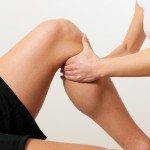
This type of massage is suitable for athletes of all levels, from beginners to professionals. If you often play sports, then massage is recommended, because you may suffer from body aches, cramps and some other body pains that might slow you down. Because massage is effective in maintaining muscle flexibility, your training will be optimal. The sports massage therapist knows the wounds of different sports and is trained to intervene clinically and at different moments in an athletic environment: to prepare for the warm-up, between events and recovery.
Get a massage regularly
It is better to add recovery massages in your schedule than to waste valuable time because you’re injured. Each treatment is different and tailored to each customer, but a frequency of once a month is a good base to reduce tensions. A good time to follow up in massage therapy is after training. You want a deep massage, do it during the days of rest. Moreover, a good evaluation allows you to find the source of your stiffness and improve your posture. The aim will be to relieve your tension by eliminating metabolic waste and promote tissue healing. Several types of massages are effective for recovery. The important thing is to find the technique that suits you and relieves you the most.
Sports massage in an athletic environment
The preparatory massage occurs before and between precise moments on the event’s site. The massage technique will be stimulating, energizing, regenerating and consists of short duration: 5 to 20 minutes. It is mainly to warm up your tendons and muscles to avoid injuries such as cramps and improve endurance.
The objective is to improve the comfort and success of the athlete, in addition to optimizing his concentration and reduce anxiety.
Following a sporting event, the recovery massage facilitates cooling, improves circulation and accelerates the return to exercise. Moreover, researchers have shown that the fact of receiving a massage would help reduce inflammation in the muscles. The risk of injury decreases because the massage would act as a natural anti-inflammatory by decreasing the inflammation mechanism. In addition, the massage allows optimum healing of the muscle’s microlesions. You should already have an appointment with your massage therapist in the next few days.
Rehabilitation Massage
Sometimes one is at rest due to injury. Take care of your body using different therapists such as physiotherapists, and massage therapists to allow optimal rehabilitation. Remember that it is possible to accelerate the healing process with different complementary techniques.
Take care and enjoy your massage!

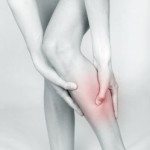
Do you suffer from leg pain or numbness? In many cases, this can occur because of a problem in your lower back, whether or not you have back pain.
To simplify the matter, we can categorize the severity of lower back problems in 3 stages.
Simple mechanical back pain without radiating down the leg: It’s a pain in the lower back without referred leg pain. This prognosis is generally very favorable and the recovery is fairly quickly, without long-term consequences through good management & treatments by a physiotherapist.
Mechanical lower back pain with nerve irritation: This is where the pain radiates down the leg with or without back pain. The leg pain is due to an irritated nerve in the lower back. The more the nerve is irritated, the more you will feel radiating pain down the leg. There is no compression of the nerve, so the leg strength and sensitivity are not affected. This type of problem is usually treated well, but may take longer to process. It is important to see your physiotherapist as soon as possible.
Mechanical lower back pain with nerve compression: When there is a nerve compression, there can be loss of strength and sensitivity in the affected foot and/or leg. The prognosis of this injury depends on how much the nerve is compressed & how long it’s been. In a minority of cases, surgery is an option for treating this type of problem.
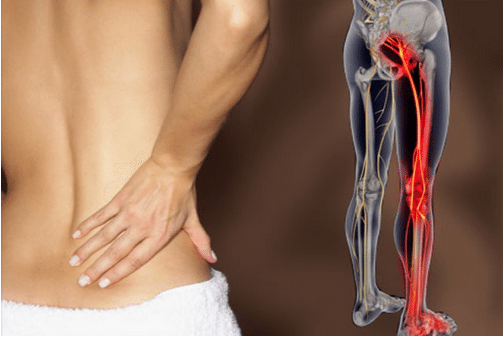
The causes of sciatic pain are varied (disk, arthritis, muscle weakness, etc.) and your physiotherapist is trained to identify and treat it accordingly.
It is important to take care of your lower back pain as soon as possible. A backache that is not treated properly has high probabilities of recurrence and, over the years, this pain can worsen and become more complicated to treat. A good rehabilitation followed by advice and recommendations of a registered physiotherapist has been proven to be the most effective way to get rid of the vast majority of lower back pain.
Don’t wait before it’s too late!

← Older posts Newer posts →

